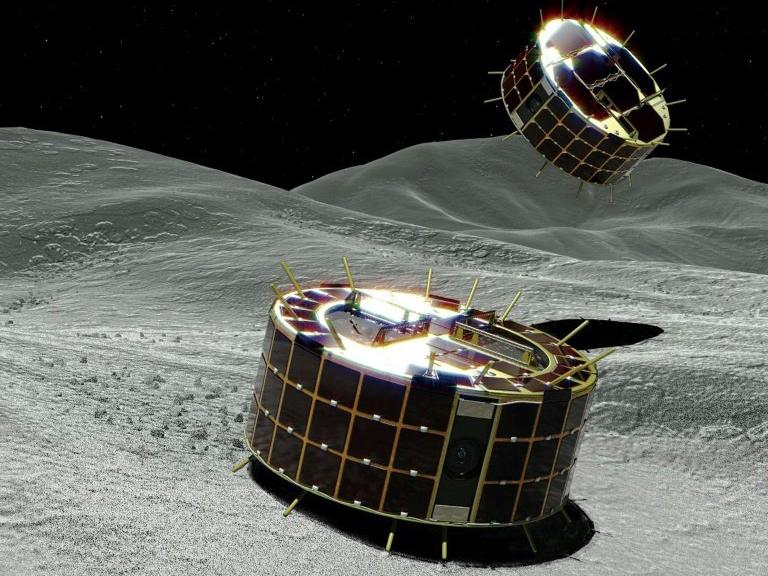Japanese spacecraft drops two rovers onto asteroid surface in first mission of its kind
Space agency scientists think mission was a success as they await contact from the tiny robots

A Japanese spacecraft has dropped two small rovers onto the surface of an asteroid zooming through space.
If they land safely, the unmanned Hayabusa-2 would be the first spacecraft to ever successfully place robotic rovers onto a space rock.
Japan’s space agency (JAXA) hopes that the mission will provide clues about the origin of the solar system.
The agency is expecting to receive data from the rovers at some point on Saturday confirming whether or not the mission has been a success.
Hayabusa-2 first arrived near the asteroid, known as Ryugu and situated 280 million km (170 million miles) from Earth, in June.
The spacefract approached as close as 55m (180 feet) to the asteroid, dropping the rovers and waiting for a minute before rising back to its waiting position about 20 km (12 miles) above the surface. JAXA said the release went successfully.
The solar-powered rovers’ voltage plunged as night fell on Ryugu, a sign that they are on the asteroid, according to Hayabusa project team spokesman Takashi Kubota.
“We are very hopeful,” said project manager Dr Yuichi Tsuda.
“I’m excited about seeing the pictures. I want to see the scenery of space seen from Ryugu’s surface.”
Each solar-powered robot is around the size of a biscuit tin, and their aim is to capture image of the asteroid’s surface and measure its surface temperature, laying the groundwork for a larger rover and lander that will be released at a later date.
They will move by hopping up to 15m (50 feet) at a time across the surface of the 1km-wide asteroid, because its extremely weak gravity makes rolling difficult.
The release on Friday bolstered the project members’ confidence ahead of the difficult manoeuvres in the future, according to Dr Tsuda.
Hayabusa2 is scheduled to attempt three brief touch-and-go landings on the asteroid to collect samples in hopes of providing clues to the origin of the solar system and life on Earth.
Since it arrived at Ryugu, scientists have been looking for suitable landing sites on the uneven surface, and its first attempt is expected in October.

The spacecraft is set to release a German-French lander called MASCOT carrying four observation devices in early October and a bigger rover called Minerva-II-2 next year.
JAXA intends to detonate an explosion on the surface of Ryugu that will leave a hole in its surface.
Hayabusa-2 will then descend into the crater to collect rocks that have not been exposed to the space environment.
It will ultimately return to Earth in late 2020, carrying samples the length of the solar system and providing scientists will the opportunity to study them close up.
Additional reporting by AP.
Join our commenting forum
Join thought-provoking conversations, follow other Independent readers and see their replies
Comments
Bookmark popover
Removed from bookmarks